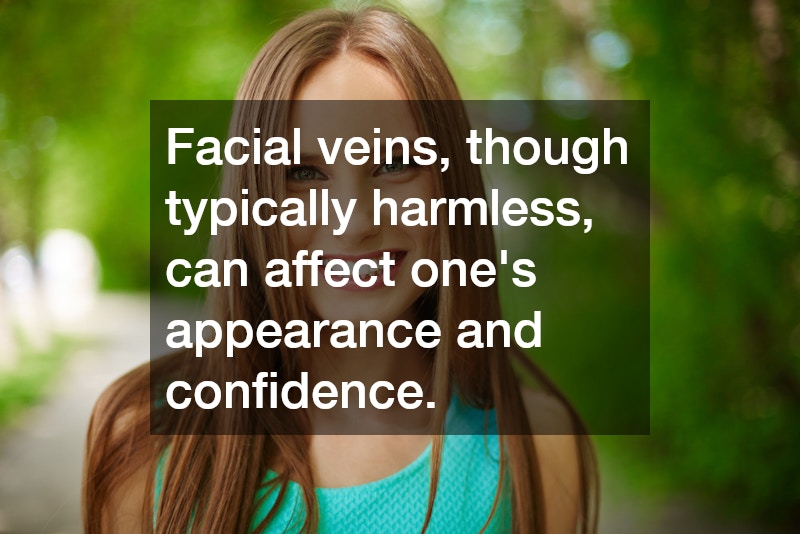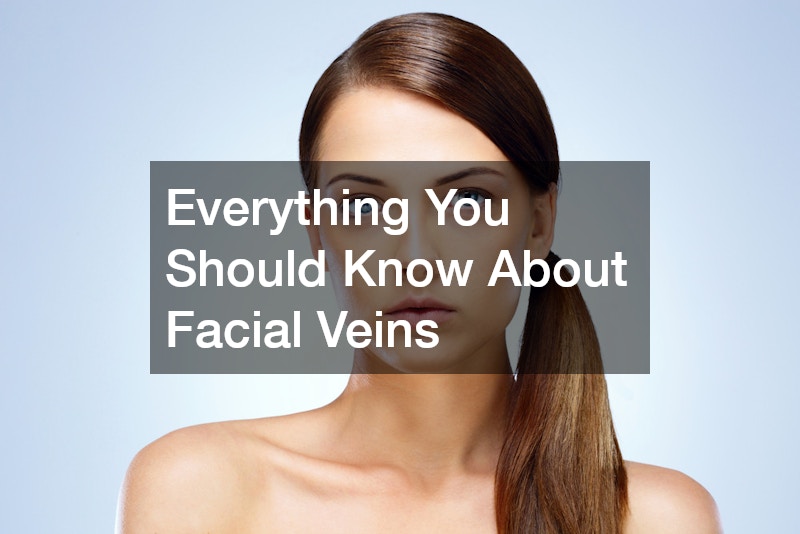
Facial veins, also known as spider veins or broken capillaries, are small, visible blood vessels that appear on the surface of the skin. While they are usually harmless, they can be a source of discomfort or self-consciousness for those affected. Understanding what causes facial veins and how to manage them can help individuals feel more confident in addressing this common skin condition.
What Are Facial Veins?
Facial veins are dilated blood vessels that appear close to the skin’s surface, often showing as thin red, blue, or purple lines. They are commonly found on the cheeks, nose, and chin but can appear anywhere on the face. Unlike varicose veins, which typically affect the legs, facial veins are smaller and do not typically cause physical pain, though some may experience a mild burning sensation in the affected areas.
What Causes Facial Veins?
Several factors can contribute to the development of facial veins. One of the most common causes is sun exposure. Ultraviolet (UV) rays from the sun weaken the skin and the walls of the blood vessels, making them more prone to breaking or dilating. Over time, this leads to visible veins on the face.
Another factor that can contribute to facial veins is aging. As the skin ages, it naturally loses collagen and elasticity, making it thinner and more vulnerable to damage. Thinner skin makes blood vessels more noticeable and susceptible to breaking, leading to the appearance of facial veins.
Genetics also play a role. If your family has a history of facial veins, you are more likely to develop them. Some individuals have naturally thinner skin or more fragile blood vessels, making them more prone to this condition.
Certain lifestyle habits can also cause facial veins. For example, excessive alcohol consumption can lead to the dilation of blood vessels, especially in the face. Repeated dilation and constriction of these vessels can eventually cause them to become permanently enlarged, resulting in visible facial veins. Smoking and exposure to extreme temperatures, such as very hot or cold environments, can also damage the blood vessels and increase the likelihood of facial veins forming.
How to Treat Facial Veins
Fortunately, several treatments are available for those looking to reduce the appearance of facial veins. One of the most common treatments is laser therapy, which uses targeted laser light to heat and destroy the dilated blood vessels. Over time, the treated veins are reabsorbed by the body, leaving the skin looking clearer.
Sclerotherapy is another effective treatment, in which a solution is injected into the facial veins, causing them to collapse and fade over time. This treatment is more commonly used for larger veins and may require multiple sessions.
Facial veins, though typically harmless, can affect one’s appearance and confidence. Understanding the causes of facial veins, such as sun exposure, aging, genetics, and lifestyle habits, can help you make informed choices about treatment and prevention. Whether you opt for laser therapy, sclerotherapy, or topical treatments, there are ways to manage and reduce the appearance of facial veins, giving you clearer, healthier-looking skin.





